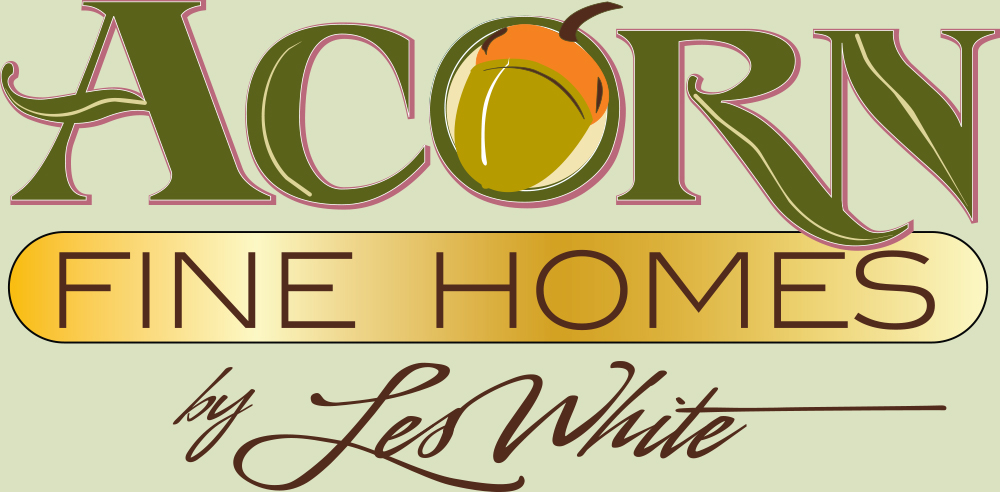
FAQ
How much does a custom home cost?
My typical 2500-3500 SF living custom home costs $270 - $300 per sf of living area plus lot and closing costs. Costs vary depending on ceiling heights, level of finishes, size of garage, amenities, and site conditions. Piling homes typically cost $400 - $470 per sf of living area and varies greatly depending on features, amenities, porches, type and number of pilings, etc. The smaller the home the higher cost per SF given the same amenities. For example a $30,000 set of cabinets will cost $9/SF on a 3300 SF home, $12/SF on a 2500 SF home, and $17 per SF on a 1800 SF home. House prices typically do not include lot improvements, pools, sea & retaining walls, piers, docks, boat houses, etc.
How can I commit to a design-build agreement when I don’t know how much the house is going to cost?
We discuss cost factors and amenity pricing with you in the first session so that we’re designing with a target budget in mind. Our Design-Build agreement allows you to proceed with design without committing to construction. When the plans, specifications, and construction documents are complete you may elect to proceed with construction. If so, then the design fee is applied as a deposit toward the build. If you decide not to build then all you have invested is the design fee.
How long does it take to build?
Design and amenity selections typically take 3-6 months and construction typically 10-14 months. Elevated and larger custom homes can take longer depending on the level of complexity, time of year, and how much general construction activity is occurring during your build time frame. Piling homes typically take 12-18 months to build.
How do I control costs?
We will guide you through most of your amenity and finish materials shopping. We estimate job costs during during the design phase so our budget forecasting is fairly accurate before construction begins. We set realistic allowances so you’ll have enough money built into the construction agreement to get what you want. This is where being a designer and a builder pays off. We know the costs of what we're drawing and how to maximize the design impact per dollar spent. In other words, maximum style and smiles per dollar.
How do you handle building for out of town and out of country clients?
About 40% of our clients live out of town and some out of the country. Design and construction communications are done by phone, email, and online live design sessions. We take lots of progress pictures during the build and upload them to our construction management portal where you can view, make comments, and share them with your friends and family. We work the same whether you're 10 miles or 10,000 miles away.
How does financing work?
Most of our clients finance their homes with construction-perm loans commonly available from most local banks. We are paid in 5-10 progress installments beginning when the foundation is complete. The construction loan converts to permanent mortgage financing when the home is complete. The cost of your lot can be included in your construction-perm loan. If you already own your lot and have it financed with another lender then the first draw will pay off your existing loan balance. If you want to pay cash then we use a cash draw schedule similar to the one the banks use and escrow a portion of your funds to be released toward the end of the build. We encourage you to select your lender during the design phase and pre-qualify yourself for the loan amount you are expecting.
We are qualified to work with VA lenders, also. The VA does not offer construction-perm loans but some lenders have a type of construction-perm loan that combines construction financing with a VA loan commitment. Check with us about current best practices regarding VA loans prior to seeking financing.
Do you use the same subs on every job?
Yes, most of the time. We typically choose from a list of experienced and trustworthy subs whom have worked on our projects for up to 30 years. More importantly, we have a list of who not to use that we have accumulated over the years. Before we use someone new, we check their current references, licensing, insurance, and examine their work.
How do you insure quality control?
We personally check everything all the time. We don't rely on anyone but ourselves to inspect the critical details during construction. We use our proprietary 700+ item master check list to monitor quality control throughout the build.
We have been building custom homes for over 34 years and see what goes wrong 7-10 years down the road that you typically can't see happening until it's too late. Flashing details, window and door installation details, and siding details will come back to haunt the home and you if not done properly. We have to inspect for that lowest paid tradesman's work who often is the one who installs a critical detail, flashing for example, that if not done properly will cause the wall to rot out and create tens of thousands of dollars in damage before it's discovered years later. We follow a 762 item check list of QC items to ensure a best quality outcome. If we build it, we make sure it's done correctly so we can all sleep well knowing we won't be called back years later about water leaks and deteriorating materials. It takes more of our time but it's well worth the extra effort and gives us and our clients peace of mind.
What is Storm-Tuff construction?
Storm-Tuff construction is a combination of structural and life safety upgrades to your home which gives your home greater storm surviveability, your family absolute safety during hurricanes, and can loweryour insurance rates up to 20%. Learn more about Storm-Tuff construction.
How do I protect myself financialy during construction?
I’ve heard horror stories about unscrupulous builders not paying their
bills and the home owner getting stuck with liens on their property.
Your first defense is dealing with a local licensed, experienced, and reputable builder. Check current references. Florida lien law provides many protections. In order for a subcontractor or supplier to file a lien on your property they must first file a notice to owner (NTO) within 45 days of starting their part of the job. Only the builder and subs who have filed an NTO can legally file a claim of lien.
Notice to owners must be sent to the builder, owner, and lending institution. When your lender receives an NTO they require that the builder submit evidence of payment in the form of a lien waiver before the builder can receive the following draw. Before the final draw is disbursed the bank requires that the builder submit final lien waivers on all subs and suppliers who have filed NTO's and also provide a builder’s final affidavit which states that all subs and suppliers have been paid. This insures that you will not be surprised by any unknown and unpaid subs at the end of the build.
It’s a common misconception that you need lien waivers on all subs and suppliers in order to be protected. The client can never really know all the names of everyone who has worked on his job so you could never be sure of who was potentially not paid and whom to require a lien waiver from.
Florida lien law solves this problem by requiring subs and suppliers who want a guarantee of payment to file a written notice to owner (NTO) to establish their right to file a claim of lien if they are not paid. The NTO gives you the complete list of those who can legally file a claim lien if they don't get paid so you know whom to get a lien waiver from. No one else can file a claim of lien on your property even if they were not paid. All you have to do is make sure those whom you have received an NTO from get paid. You don't have to worry about anyone else. Your lender is required to collect these lien waivers as they disburse funds on your behalf.
I pay all my subs and suppliers on time so none of this is ever a problem for my customers. My credit references are available upon request.
Do you do cost plus jobs?
I don't do total cost plus jobs. Most custom home contracts are typically hybrids, a combination of fixed and cost price components, which are essentially partial cost plus contracts. The allowance section is the cost portion which involves setting specific budgets for lighting, appliances, cabinets, carpet, etc. The client pays for all expenditures over the allowances or is credited all expenditures under the allowances. It is important to set realistic allowances before beginning construction so you’ll have enough money budgeted for what you want.
What warranties come with your homes?
Everything is covered for 1 year parts and labor. Usually if something is going to fail it will happen within the first 90 days. Appliances, roofing, AC, and other components all have extended manufacturer’s warranties, typically 5 years.


